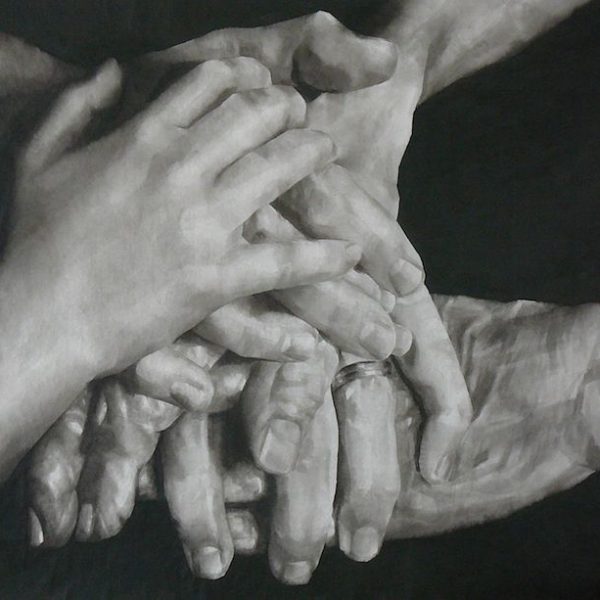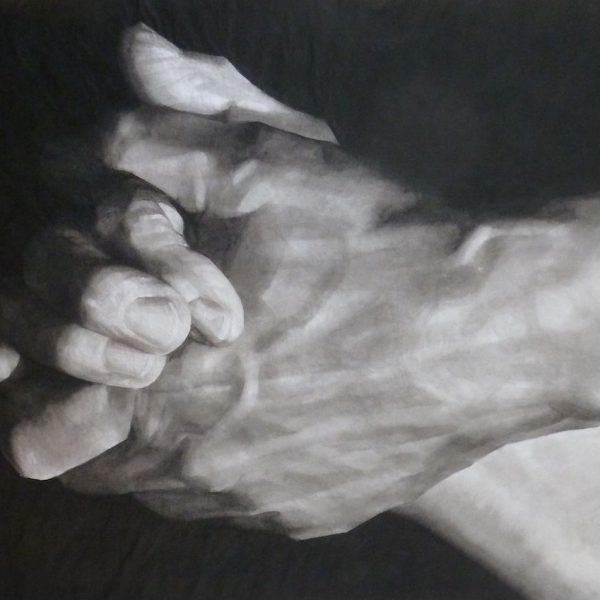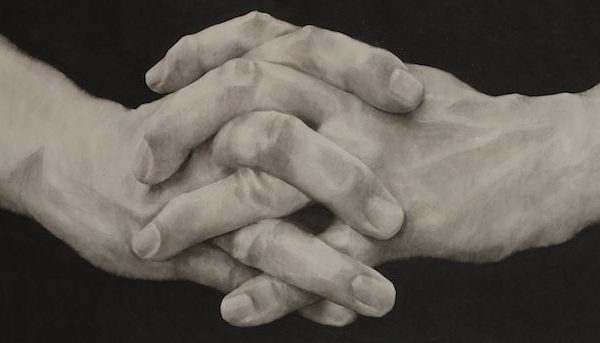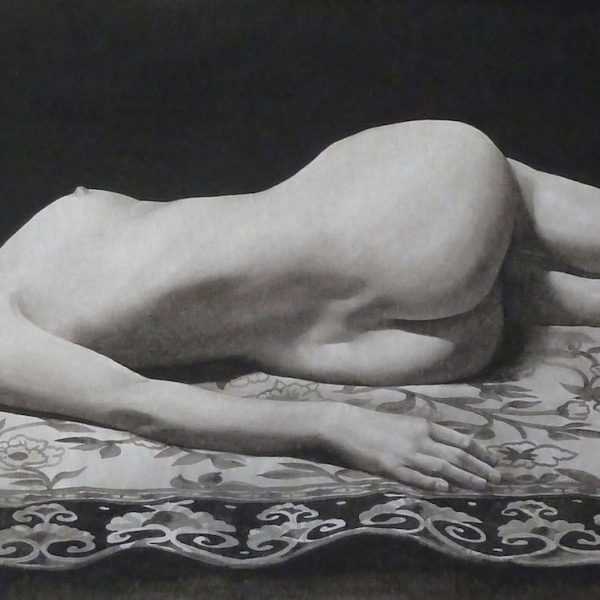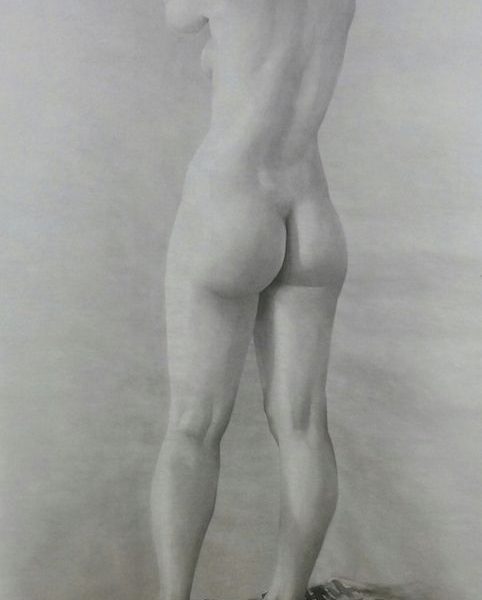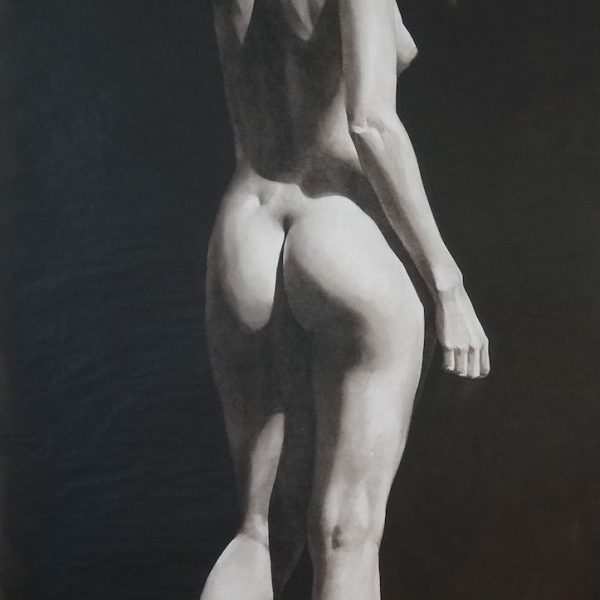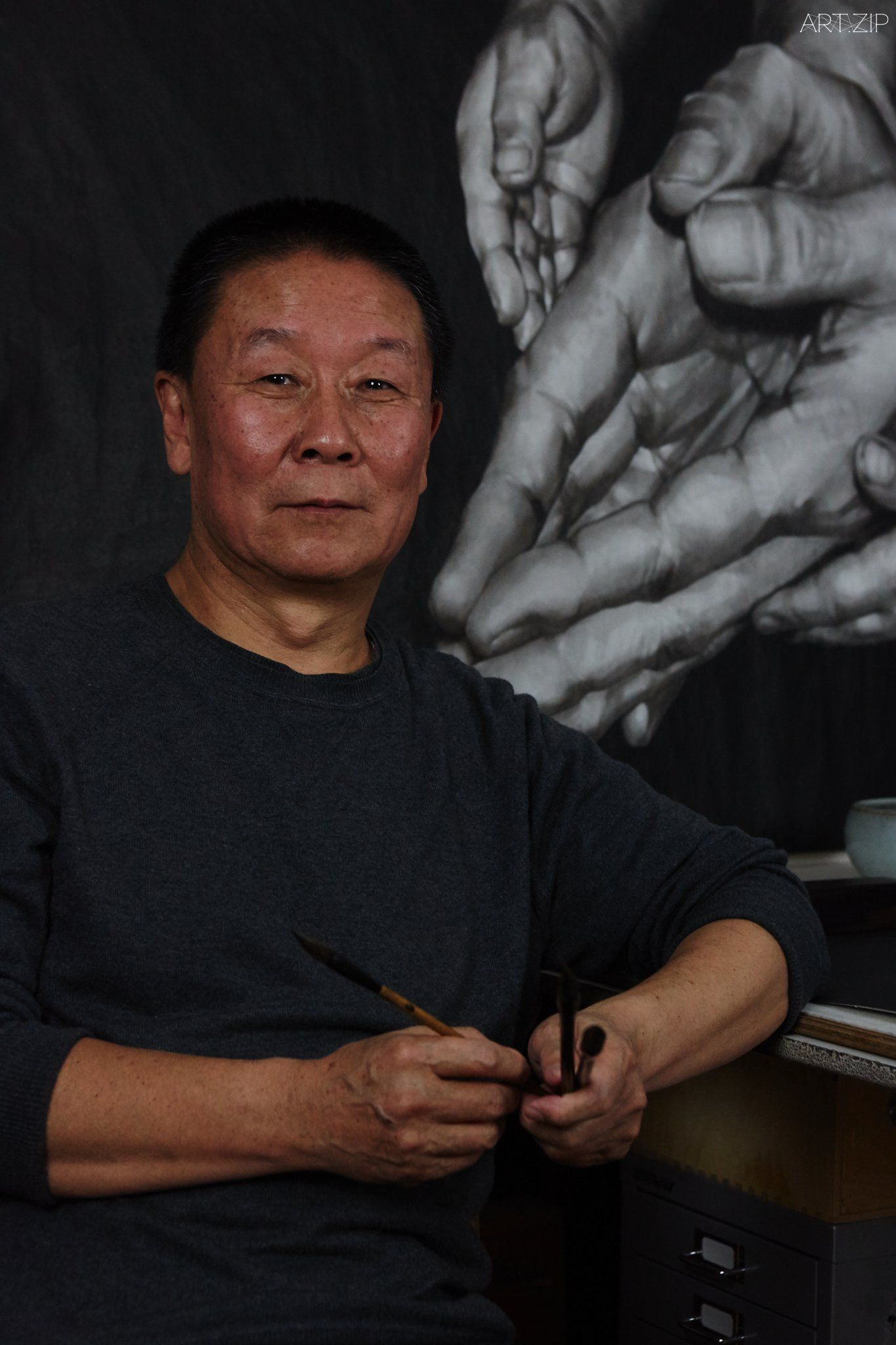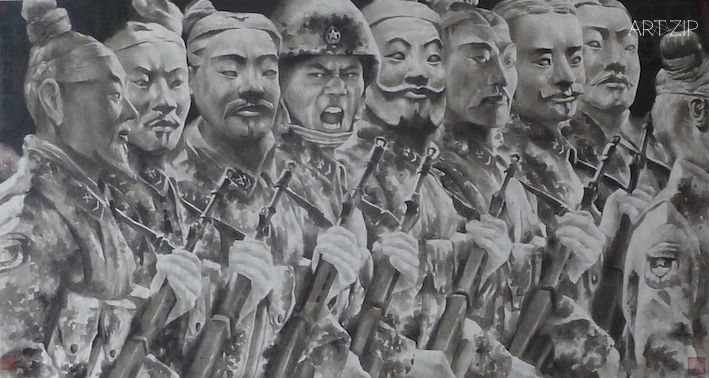
The Spirit of Ink in Qu Leilei
曲磊磊的水墨精神
Text by 撰文 x Harry Liu 劉競晨 Translate by 翻譯 x Sophie Guo 郭笑菲

Qu Leilei. Empire. Ink on Paper. 91 x 170 cm
In the autumn of 2015 the British Museum (BM) acquired several pieces of work. It is normal for this globally acclaimed museum to enrich its collection. However, the acquisition and the manner of display for this time gain a profound meaning.
Lei Feng and Journey by UK-based Chinese artist Qu Leilei, were the two pieces that British Museum acquired originally from his “Empire” series, Leilei integrates Lei Feng and a terracotta warrior in a surrealist manner, by combining two thousand years of history, in order to explore the value and dignity of human life. Journey is one of the works in his series Facing the Future. Using the hand as a medium, the painting represents the common ideal and aspiration between people from different cultural and ethnic backgrounds. When discussing the reason why the British Museum chose Qu Leilei to collect, it is impossible not to relate back to Qu’s unique family history and the experience in his artistic career. Qu Leilei’s father Qu Bo is a renowned novelist in China. His work Tracks in the Snowy Forest is influential to several generations. Qu Leilei inherited the family tradition, but didn’t adhere to rules. Since the late 1970s, as one of the founding members of the Star Group, he has witnessed and opened the first page of Chinese contemporary art. Since then, what he believed as ‘politics for democracy, art for freedom’ has always been the principle for his art. During his 30 years of residency in the UK, Qu has been quietly exploring and practicing his art, as if the strong wave of Chinese contemporary art and the ups and downs of the art market only exist on the another planet. Qu has always been keeping his own ideal, engaging with our immediate world using his unique style of ink art. Qu thought that the strategy that Museum adopts in collecting is different from that of other art institutions. British Museum not only collects from an art-historical perspective, but also scrutinises the ways in which the work inherits the spirit of humanism and contributes to the development of the human society. It is due to a rigorous collecting strategy like this, that British Museum finally picked Qu’s work out of the thousands of “contemporary ink art” of various kinds. Qu’s life experience, the concept of integrating the cultures between the East and West as well as the ideal and aspiration of melting together the multi-cultures around the world, all meet British Museum’s open-minded agenda of inheriting the past and forging ahead into the future.

Qu Leilei. Lei Feng. Ink on Paper. 170 x 91cm
As part of the permanent collection of British Museum, the display of the two pieces of Qu is very distinct. Lei Feng and Journey are exhibited permanently on each side of the Admonitions of the Instructress to the Court Ladies. The Admonitions Scroll, traditionally ascribed to the painter Gu Kaizhi (c. 345–c. 406) from East Jin dynasty, has been the greatest treasure of British Museum since its acquisition in 1902. During the WWII, the British government intended to return this painting to China to thank the Chinese army for rescuing the besieged British troop in Myanmar. The Chinese was asked to choose between the Scroll and a submarine, and it picked the latter. Since the painting of thousand years old is extremely fragile on its surface, it has only been shown to public for a month every year from 2013 and for the rest of the time it would be placed horizontally within a sealed showcase and kept away from light. This demonstrates the profound meaning behind the British Museum’s collection and display of the works, as the Museum juxtaposes the tradition of China from thousands of years ago and the contemporary spirit of ink. On the other hand, we could clearly see the interaction and mutual integration between the Chinese culture and the affects from this era and other part of the world during the course of ink art being inherited. The transformation of the world in the thousand years is embodied between the new and the old, which is filled with the bits and pieces resulted from the collision and integration between the Eastern and Western cultures.
2015年的秋天,大英博物館中又添多了幾件藏品,對於這個全球首屈一指 的博物館來說,不斷擴大自己的館藏本是一件很平常的事情,但此次的收藏和陳列方式卻有著極為深刻的意義。
此次大英博物館收藏的作品是旅英藝術家曲磊磊創作的當代水墨作品雷鋒》和《旅程》 ,《雷鋒》一畫是他創作的《帝國》系列之一幅 , 以超現實主義手法,將雷鋒和秦陵兵馬俑合而為一,在兩千年的歷史契合中,探討生命的價值和人性的尊嚴;《旅程》一畫, 是他的《面對未來》系列中的一幅,以手為媒介,表現當今世界不同文化和族群間的共同理想和訴求。談到此次大英選擇曲磊磊的作品作為收藏對象,不得不說到曲磊磊獨特的家學淵源和藝術生涯,說到曲磊磊的父親曲波,在中國可謂是婦 孺皆知,其創作的《林海雪原》更是成為了影響幾代人的著作。而曲磊磊秉承家學卻並不循規蹈矩, 在上世紀70年代末 ,他作為“星星畫展”的創始者之一見證和掀開了中國當代藝術發展的第一個篇章,從那時起,他所 堅 信 的“ 政治要民主 ,藝術要自由”始終是他創作的信條 ,至今未曾改變。旅英30年來 , 他一直默默地探索和實踐,風起雲湧的中國當代藝術浪潮和市場的動盪好似都是另外一個星球的存在, 他一直恪守自己的理想, 用他特有的筆墨風格來關照我們當下的世界。說到此次被大英博物館收藏的作品,曲磊磊覺得大英博物館的收藏策略與其他純藝術機構有所不同,他們並不是單單從藝術史的角度來收藏作品,而是要綜合考量作品所具有的人文精神上的傳承以及對人類社會發展的貢獻。也正是從這種嚴謹的收藏策略出發,使得大英 博物館最終從紛繁複雜的各色“當代水墨藝術”中選擇了曲磊磊的作品,他的身世經歷,其作品表現出來的東西融合的理念以及對全世界多元文化大融合的理想和訴求都契合了大英博物館兼容並包、繼往開來的宗旨。
作為大英博物館的永久藏品,曲磊磊的兩幅作品的陳列方式也極為獨特,《雷鋒》和《旅程》兩幅作品被置於《女史箴圖》兩側永久展出。而《女史箴圖》俱信是東晉畫家顧愷之的畫作,從1902年入藏大英博物館以來一直都是其鎮館之寶。(第二次世界大戰期間,英國政 府為感謝中國軍隊在緬甸救援被圍英軍,有意將此畫 歸還中國,提出《女史箴圖》和一艘潛水艇二擇其一, 中國政府選擇了潛水艇。)由於畫作歷經千年滄桑,畫 面極易損傷,從2013年開始,此畫被平置於密封展櫃之內,每年對公眾展示一個月,其餘時間則避光封存。由此可見,此次大英博物館的收藏和陳列包含深意, 將中國千年之前的傳統與當下的水墨精神並置,一則是看到了中華文明的強大生命力,歷經千年依然被後 人所傳承;另一方面,也可以看得到在水墨傳承的過程中來自時代和世界的影響也與中華文明產生著融合和互動。一新一舊之間,見證的是千年來世界的變遷,飽含的是東西方文明碰撞和融合的點點滴滴。
Qu Leilei
Qu Lei Lei was born in the 1950s and grew up in Beijing. He attended Beijing Medical University and then studied in London. He is currently based in UK. He was a founding member of the ‘Stars’, a group of artists who formed the first ever contemporary art movement to appear in China. In the ‘80s, he served as an art director at China Central Television. In 1983 his production the Wasted Years was awarded first in the design competition of the national television. Working quite simpy with ink on paper his works comprise a blend of classical Chinese and Western art techniques combined with modern concepts, illustrated by the relatively recent warriors (Empires project). Qu Lei Lei’s paintings have been exhibited both nationally and internationally at the Venice Biennale, the Beijing Biennale and the Pompidou Centre in Paris. Qu Lei Lei’s one man shows include the Ashmolean Museum, Oxford and China’s National Gallery where his work forms part of their collections. Art works have recently been acquired by the British Museum and the V&A for their permanent collections.
曲磊磊
曲磊磊出生於上世紀50年代,在北京長大。後來,他先後進入北京醫科大學及倫敦中央美術學院進行學習。現已旅居英國。他八歲開始學習中國傳統工筆和寫意畫,是“星星畫會”的創始人之一。上世紀80年代,他曾擔任中央電視臺的美術設計,1983年,《蹉跎歲月》獲得國家電視劇設計一等獎。曲磊磊擅用毛筆、水墨、宣紙等中國傳統材料來塑造人物的面孔、手和身體,來探求表現作品的力度和深度。在他的作品中,光和陰影的運用與傳統作品中有很大不同 。曲磊磊曾在上海、倫敦、紐約、巴黎、東京等多地舉辦個人展,其作品被中國美術館、英國阿什莫林博物館、瑞士銀行等多家博物館、機構收藏。
曲磊磊的創作深切關注人、生命、歷史和未來, 通過人的真實生存處境,探討生命的意義和價值、人性的美和尊嚴。

